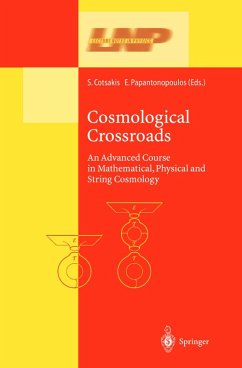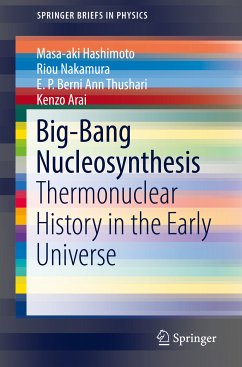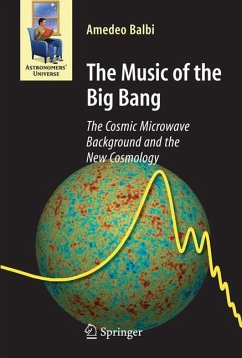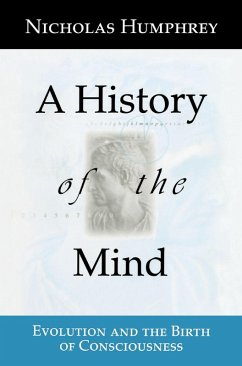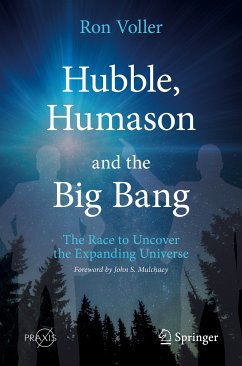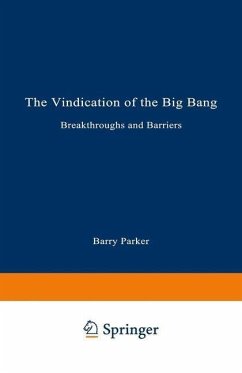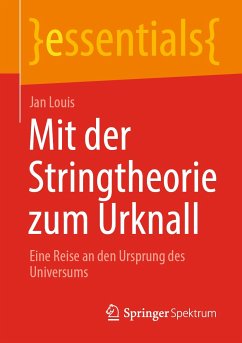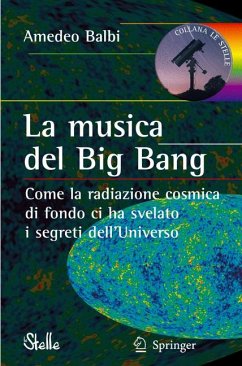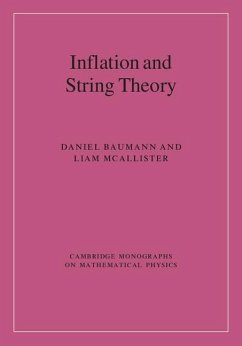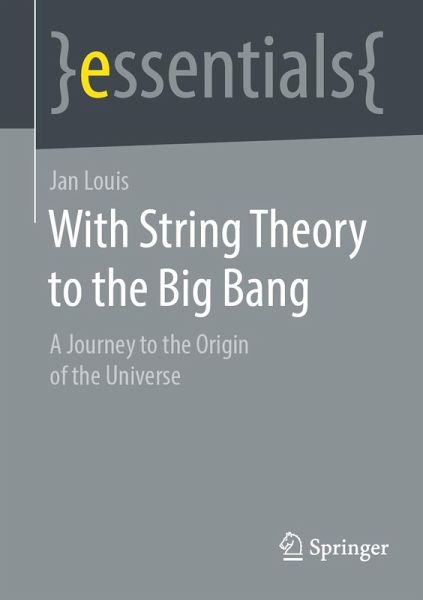
With String Theory to the Big Bang (eBook, PDF)
A Journey to the Origin of the Universe

PAYBACK Punkte
6 °P sammeln!
The history of the universe has fascinated mankind for centuries. Using the interplay of cosmology, general relativity, particle physics and quantum theory, it is today possible to reconstruct it physically. Only the beginning, the big bang, has so far eluded the established laws of physics. The more one approaches it, the more speculative the story becomes. With this book, the reader is invited on a journey to the Big Bang learning on the way about various physical facts, observations and theories. String theory is introduced as a possible all-encompassing physical theory that has the potenti...
The history of the universe has fascinated mankind for centuries. Using the interplay of cosmology, general relativity, particle physics and quantum theory, it is today possible to reconstruct it physically. Only the beginning, the big bang, has so far eluded the established laws of physics. The more one approaches it, the more speculative the story becomes. With this book, the reader is invited on a journey to the Big Bang learning on the way about various physical facts, observations and theories. String theory is introduced as a possible all-encompassing physical theory that has the potential to grasp and describe the Big Bang. Its sometimes spectacular predictions, such as additional spatial dimensions or parallel universes, are explained concisely.
This Springer essential is a translation of the original German 1st edition essentials, Mit der Stringtheorie zum Urknall by Jan Louis, published by Springer Fachmedien Wiesbaden GmbH, part of Springer Nature in 2021. The translation was done with the help of artificial intelligence (machine translation by the service DeepL.com). A subsequent human revision was done primarily in terms of content, so that the book will read stylistically differently from a conventional translation. Springer Nature works continuously to further the development of tools for the production of books and on the related technologies to support the authors.
This Springer essential is a translation of the original German 1st edition essentials, Mit der Stringtheorie zum Urknall by Jan Louis, published by Springer Fachmedien Wiesbaden GmbH, part of Springer Nature in 2021. The translation was done with the help of artificial intelligence (machine translation by the service DeepL.com). A subsequent human revision was done primarily in terms of content, so that the book will read stylistically differently from a conventional translation. Springer Nature works continuously to further the development of tools for the production of books and on the related technologies to support the authors.
Dieser Download kann aus rechtlichen Gründen nur mit Rechnungsadresse in A, B, BG, CY, CZ, D, DK, EW, E, FIN, F, GR, HR, H, IRL, I, LT, L, LR, M, NL, PL, P, R, S, SLO, SK ausgeliefert werden.



